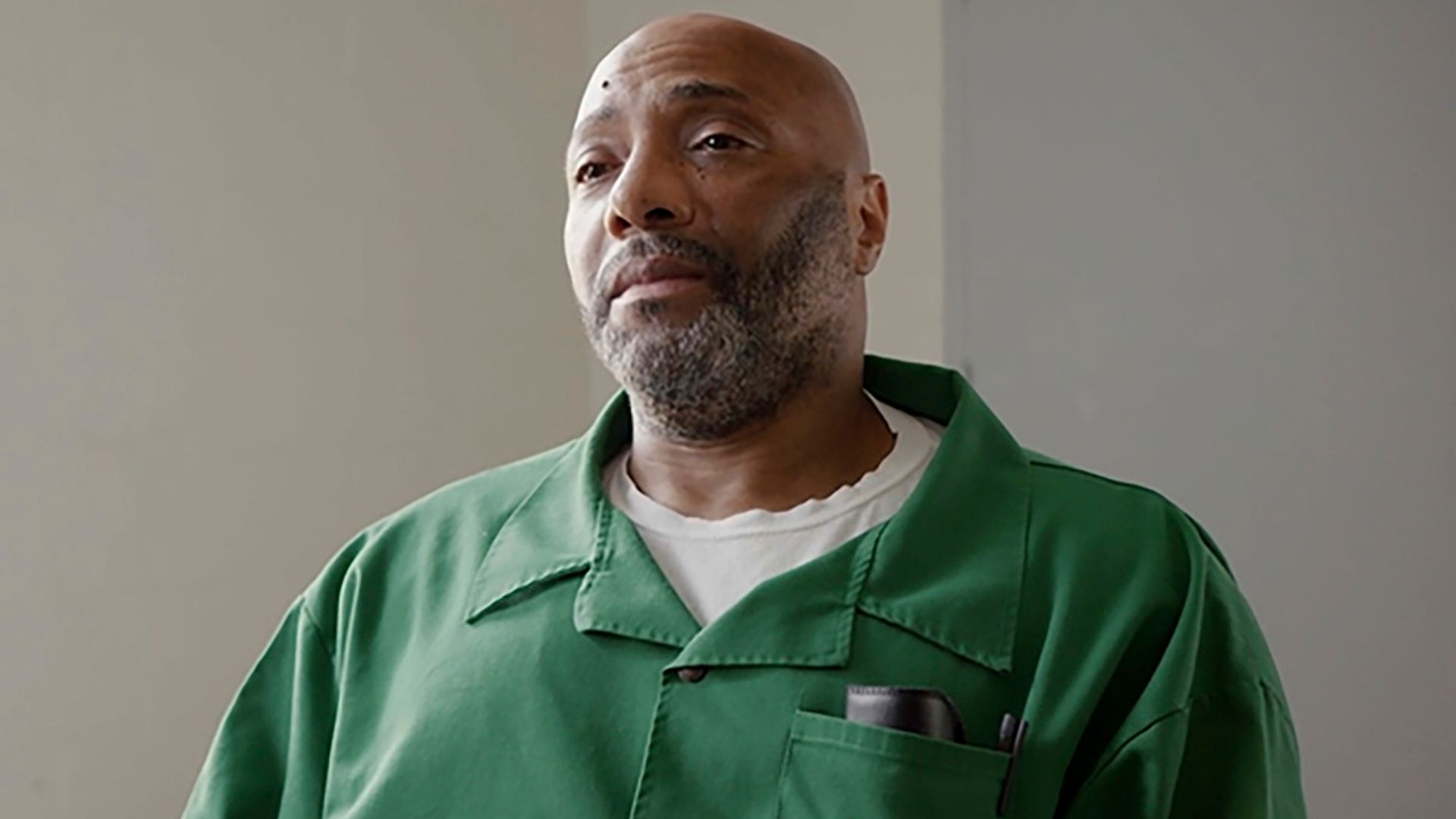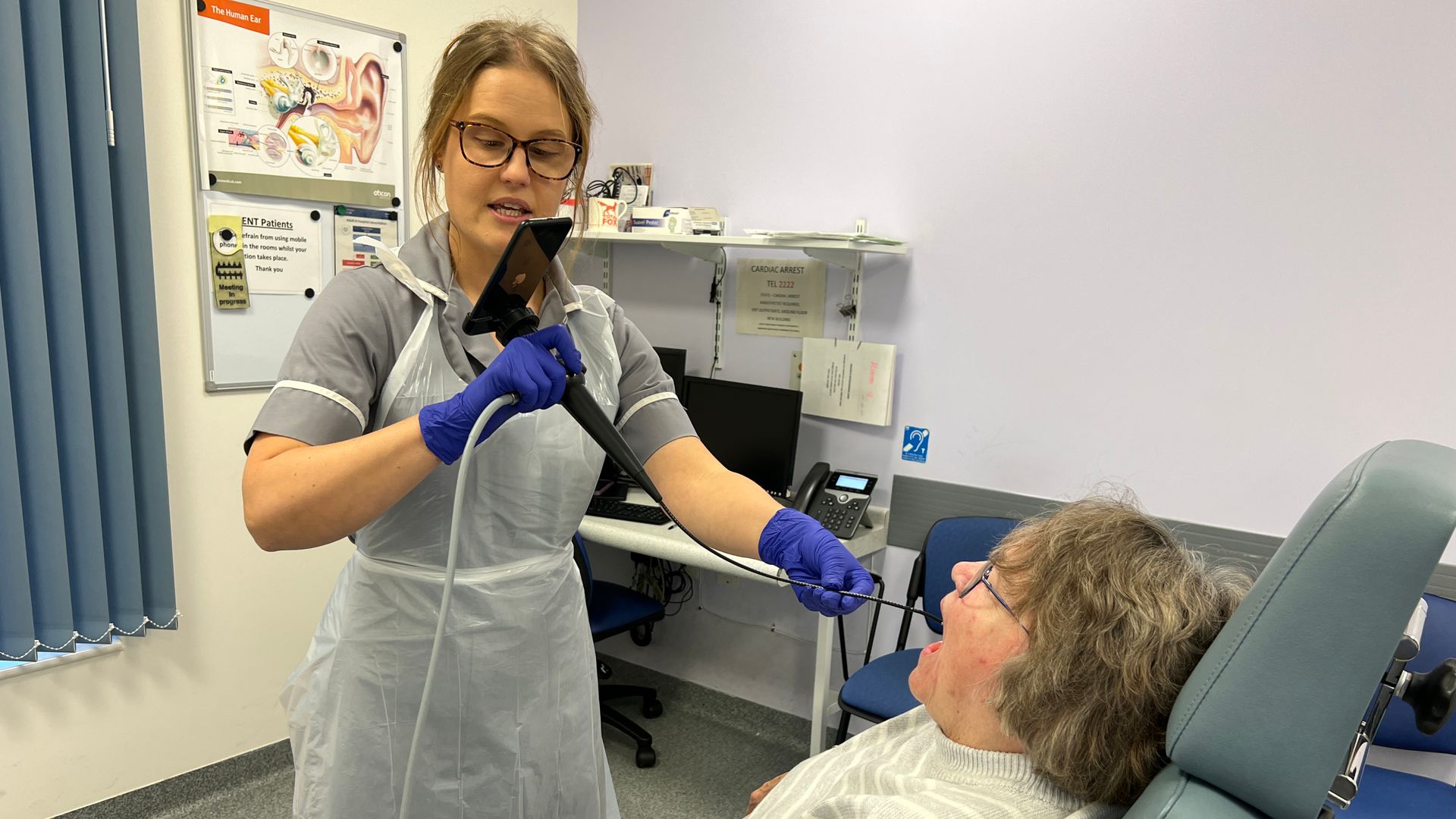
This story is part of Maine Public’s series “Climate Driven: A deep dive into Maine’s response, one county at a time.”
It’s a sunny and unseasonably mild-January morning as Linnell Mather, George Kendrick and Margaret Qualey gathered in what they describe as part of Vinalhaven’s unofficial community center: a public parking lot.
“You know, so we’re all parked here — there’s George and Laura,” said Mather, who has lived on Vinalhaven for decades. “It’s where the community connects.”
“So it’s the crossroads of the town with all of the primary infrastructure,” added Kendrick.
Downtown is known as Downstreet on this island 12 nautical miles from Rockland. Vinalhaven’s roughly 1,300 year-round residents catch up at the post office, bank and grocery store while, during summer, tourists are drawn to the restaurants, galleries and shops in the 1800s-era buildings. But Mather points to a newly installed tide gauge and a mound of seaweed left behind by a powerful Christmas weekend storm.
“There was water right up to the barrier, wasn’t it?” she said. “So it flooded — this was all underwater.”
The pre-Christmas storm flooded the parking lot, a private boat yard and sections of the road. It also caused damage to several buildings.
Flooding is not a new phenomenon along Downstreet, much of which was built on fill from the island’s old granite mines in a narrow stretch between the ocean and a tidal pond. But the salty waters of Penobscot Bay are creeping into the historic business district with increasing regularity. It’s a growing issue for island communities across Maine, where infrastructure such as ferry docks, fishing piers and boatyards is a lifeline that makes it possible to live miles away from the mainland — but also a major vulnerability as climate change causes the oceans to rise and triggers stronger storms.
So residents of several Waldo and Knox County islands are taking action.
As members of Vinalhaven’s Sea Level Rise Committee, which was formed nearly seven years ago, Mather and Qualey are at the center of discussions about how rising waters and stronger storm surges threaten not only Downstreet but also the ferry terminal and other infrastructure that is essential for Maine’s second-largest lobster port. A retired engineer, Kendrick has been a major player in work on a major infrastructure upgrade — dubbed the Downtown Project — that is slated to break ground in the spring.
“It’s a very complicated topic for small towns to wrestle with because there are so many moving parts — and none of it is cheap,” said Kendrick. Further complicating matters, much of the vulnerable Downstreet buildings are privately owned so the town has limited say over any climate-related actions. And Kendrick said there’s often strong concern whenever anyone talks about using public money to pay for improvements on private property.

“Another vulnerable place is our ferry,” Qualey said. “We can’t live without the ferry and that’s right on the point of that south storm coming in.”
“They’re at risk, at high risk, of wave damage,” Kendrick added.
Maine’s rocky shoreline insulates many coastal towns from the more severe impacts of rising seas. But it’s a different situation for communities surrounded by water. Even a gradual rise of a foot over the coming decades — which is the lower end of many predictions — will pose a threat. So, many island communities are identifying their weak spots.
Vinalhaven’s $7 million project is funded mostly through grants with about $1 million in town reserve accounts that had been slated for infrastructure improvements. The 2-year project will begin by raising sections of the road Downstreet, replacing sidewalks, upgrading or replacing the water main and stormwater system, and making the sewer system more resilient to periodic flooding. Later aspects of the project include upgrading the public parking lot, improving the town’s boat launch.
Kendrick said the project is intended to buy more time.
“We came to realize that blending the economic development with resiliency made sense because if we don’t fix the infrastructure to make it resilient, it’s almost moot when you’re trying to attract some investment,” he said. “Nobody is going to invest in downtown if they think it’s going to be gone in 25 years.”
North Haven
With the exception of the seaweed, most of the evidence of that Dec. 23 storm is gone. But about six miles away, on the neighboring island of North Haven, Foy E. Brown and his father, Foy W. Brown, are looking at months of repairs at the family-owned Brown’s Boatyard, which is a hub for the local economy.
“If we take another thrashing like that, I don’t know. She’s been through quite a few storms already, but that one . . .” the younger Brown said one afternoon while standing inside the family business.
For more than a century, Brown’s family has built and repaired sailboats, lobster boats and small boats inside this massive, post-and-beam structure sitting atop tall piers well above the water. But during the recent storm, the water was six inches deep inside parts of the building.

Two tape marks on an old table saw show dates in 1978 and 1997 when the water crept even higher. But Brown said the waves and swell damaged one of the building sills, undermined a section of the floor and damaged a ramp on dock, and tossed around moorings and heavy equipment.
They’ll do most of the repairs themselves, he said, but some will take more time than others.
“When you live out here, you need to know how to take care of yourself,” Brown said. “You can’t just call somebody and say, ‘I need this.’”
He’s heard the predictions that such storms will become more frequent as the climate shifts. But Brown says he’s been telling people for years that the weather has changed.
“Man, it seems like whenever it rains now, you get like 2 inches of rain or 3 inches of rain. You doesn’t get just, like, a rain. And then whenever it blows, it’s either zero or it’s blowin’ 30 at a minimum. You don’t get a 10- to 15 [mph wind]. It’s either flat calm or it’s blowing 30.”
‘The Narrows’ of Isleboro
A little farther up Penobscot Bay, Islesboro recently received a $50,000 climate resiliency grant to hire a part-time planner and an engineering firm. The primary goal is to study options for dealing with The Narrows, which, like Downstreet Vinalhaven, is increasingly underwater.
“So The Narrows is the connecting point between the north end and the south end of the island,” said Liv Lenfestey, a fellow with the Island Institute, a Rockland-based nonprofit that works closely with island communities on climate adaptation and resiliency. “And when it floods, it’s impassible. And the people in the north can’t get to the south and vice versa.”
Living on Islesboro, Lenfestey works with that community’s Sea Level Rise Committee and local officials as they explore whether to raise the road, build a bridge or make other changes. No mere nuisance, flooding at The Narrows cuts off people from emergency services. The Narrows was closed for much of the day during the December storm. And there are long-term concerns about Islesboro’s ferry terminal as well as the historic lighthouse next door, which flooded during the storm just before Christmas.
“It’s definitely a pretty scary thought that when that road is flooded, there are people who can’t get down to some of the resources they need,” Lenfestey said. “I mean, even the ferry comes to the south part of the island. So when that road is impassible, we are two different islands.”
Back on Vinalhaven, Linnell Mather said residents of other islands often reach out for advice as they look to launch their own climate resiliency efforts. But she acknowledged the work of the Sea Level Rise Committee is still not on the radar for many in this lobstering and tourism community.
“I think that December storm sort of opened up some people’s eyes and reminded them of the risks of flooding of Downstreet,” she said. “So it makes the timing of the Downstreet Project good.”
But the project will only address some of Vinalhaven’s issues. And Kendrick said that if seas rise more than a foot, the community may have to consider moving those community assets along Downstreet onto higher ground.
“If we do have the worst-case scenario of sea-level rise happening, retreat is going to be the only option,” Kendrick said. “The good news is that west Main Street is all very high . . . You might lose that historic feel but you probably would be able to recreate the crossroads concept in a different part of Main Street,” Kendrick said.









